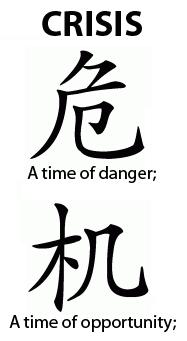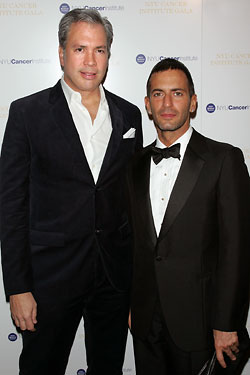Tuesday, March 30, 2010
Marc Jacobs: Fashion Week Recap
Wednesday, March 24, 2010
Seeing the Opportunity in a Crisis
 An ancient Chinese proverb states that "a crisis is an opportunity riding a dangerous wind". It has been shown time and again that this statement is true. From every crisis comes the opportunity for an organization to learn from past mistakes and take action to prevent a similar crisis from occurring in the future.
An ancient Chinese proverb states that "a crisis is an opportunity riding a dangerous wind". It has been shown time and again that this statement is true. From every crisis comes the opportunity for an organization to learn from past mistakes and take action to prevent a similar crisis from occurring in the future.Wednesday, March 17, 2010
Fashion D-Day



Wednesday, March 3, 2010
Crisis on the Runway
New York Fashion Week has come and gone leaving in its wake a plethora of stories and updates about the major designers. Opinions on which designer runway shows topped the list began circling across the media immediately, more often than not, placing Marc Jacobs right at the top! Reviews were rave, applauding Jacobs simple background and wearable Fall line. The high of this runway success however, did not last long. As always, the company's next crisis was right around the corner at the shows after-party.
Crises like this can occur at the drop of a hat, which is why it's important to have a PR team that can effectively manage it. Responding quickly and mitigating the effects of the crisis show to be extremely important while a crisis is occurring. While Duffy quickly admitted that posting the photo was not showing the best judgement, it seems the Marc Jacobs PR department may have had enough of how Twittering mishaps.
It seems Marc Jacobs President Robert Duffy can't help but to stir up controversy on his recently removed Twitter page. At the fashion shows after party, Duffy decided to upload so pictures from his phone to his Twitter page. While I am sure fans were excited to get an inside look at the happening of a party that was privy to fashion insiders Rachel Zoe and Bee Shaffer, they may have gotten more than they bargained for when Duffy uploaded a photo of a naked man to the page.
This was not the first issue the Jacobs brand has seen since Duffy began Twittering a mere month ago, so it was no surprise to me when a few days later, he bowed out of the twittershpere. So it makes me wonder... Did Duffy choose to say goodbye to Twitter, or was the site just causing the company too many issues?

